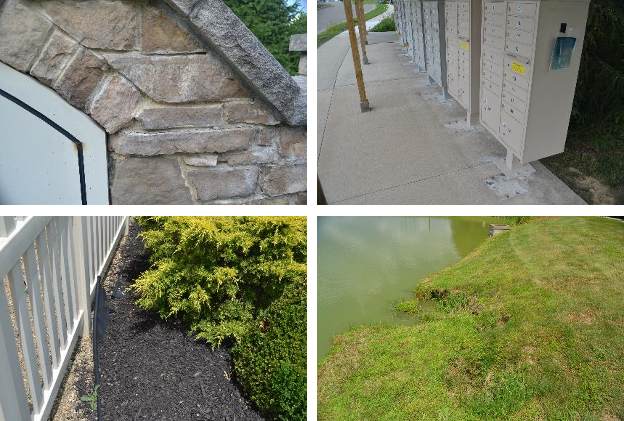

There are times when having property reviewed by an objective and expert third party is necessary. Outside expertise protects both sides in property related issues. An expert delivering a direct and unbiased assessment can eliminate future surprises, ensure a board is not taking on (or ignoring) necessary repairs, and even put to bed an ongoing grievance or concern.
This issue of The Blue Print highlights recent projects where J. Hershey Building Consultants have helped community associations by resolving issues, preventing unnecessary spending, or confirming construction quality.
**We at the J. Hershey Group have had the people of Florida very much on our minds. Sending best wishes and positive energy to colleagues and friends impacted by the recent hurricanes. **

This condo board discovered that a second floor unit owner had removed two interior walls without permit or following the prescribed process. J. Hershey Building Consultants was hired to review the work and ensure structural integrity, especially that the roof of the building was still adequately supported. The picture below left shows this unit entry as the top floor of the building. Below right shows the final result of removing the interior walls that had defined the kitchen space.

J. Hershey Building Consultants not only assess structural integrity in cases like these, but understand association by-laws, governing building code requirements, and the typical legal process. This enables us to efficiently move these conversations to pragmatic next steps.
J. Hershey Building Consultants was hired by a single unit owner to analyze a persistent leak in the mechanical closet. This leak had been going for over 15 months and across multiple contractors and many attempts to resolve. The unit entry floor was badly damaged, as well as the ceiling and walls of the mechanical closet. Both the unit owner and the board were frustrated.
The picture below right shows the building, the mechanical closet was leaking on the 4th floor. The unit immediately above showed no water infiltration. Below right you see the damage to the entry floor of the unit.

Above right shows a picture of the unit owner’s attempt to capture water by affixing a funnel to the mechanical room ceiling to catch the drip. Above right shows an active drip on the outside of insulated hose which is part of the mechanical chase. The source of the leak was identified as coming from a leak or hole in the common mechanical chase originating above this unit. The chase bends (see above right) right above this 4th floor mechanical room unit, allowing water to travel down the chase and dripping off the bend. If the chase did not bend the leak would simply follow the lines down to the chase drainage in the basement garage.
J. Hershey Building Consultants have a very strong track record of identifying the genesis of water infiltration, leading to successful resolution. To learn more about water infiltration, listen to a podcast via the link at the bottom of the newsletter. We also offer NCARB approved training on Water Infiltration.
Transition studies should be done whenever property ownership is being transferred from the developer to the association. Detailed findings enable negotiation of repairs/maintenance to be done before full transition, otherwise the association will be responsible for unplanned repairs. In this case a new property was transitioning from builder to community association oversight. Small and large issues were identified which enabled the association to push for improved quality or additional repair work and, importantly, corrected documentation.
The picture below left shows cracking and evidence of water infiltration in the entry sign to this development. Left unchecked, this sign would need constant repair to the stone facade and would not present an indication of ideal quality of the development. Below right picture shows the mailboxes were moved but the concrete slab not repaired.

The picture above left shows the barrier between the playground pea gravel and the landscaping mulch already coming up. These small maintenance issues can add up! Above right shows a retention pond that has no erosion control measures. In addition, this pond highlighted that the site map of the property was incorrect.
J. Hershey Building Consultants’ transition studies provide the nitty gritty detail needed to have a robust transition discussion. Our construction method expertise and perspective on reasonable expectations of quality to deliver full transparency and will help avoid unanticipated maintenance
Let’s continue to improve our ability to spot property needs!

Answer: Life safety hazard. Retaining walls over 30″* should have some form of deterrent to prevent potential of falling over the edge to the sidewalk below. *Minimum wall height depends on governing code.
| Now is the time to complete your Reserve or Transition Study so you have an accurate and detailed funding plan to improve or maintain your properties. We perform Reserve and Transition Studies on all sizes of community associations from single family HOAs to high rise condominiums and every residential building type in between. |